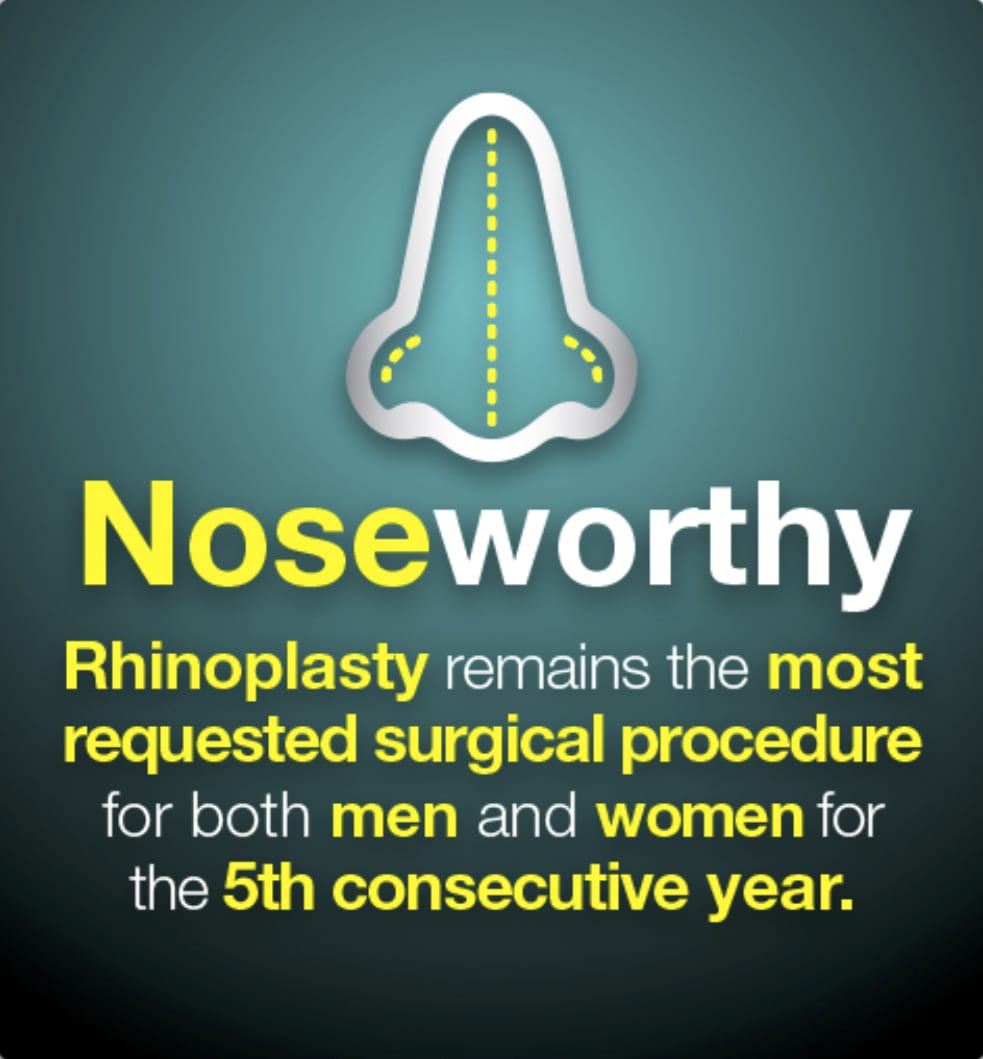The nose wins! And the nose will likely continue to win in facial plastic surgery for the foreseeable future. This 2015 survey was performed by the American Academy of Facial Plastic and Reconstructive Surgery of its members, board certified surgeons who specialize in plastic surgery of the face, head, and neck.
The nose is a key area of focus for many men and women. A large nasal bump or bulbous/droopy tip are the most common aesthetic reasons to have rhinoplasty surgery. Unlike facelift surgery, rhinoplasty is commonly performed for a broad age range (ie. 18 to 80) of both male and female patients.
Rhinoplasty is often performed to improve the appearance of the nose, but patients may undergo rhinoplasty to improve nasal function too. The nose plays an important role in a wide range of functions, such as breathing, smelling, and sinus health. For example, a patient with a deviated septum may require septoplasty and rhinoplasty to adequately improve the nasal passageways. A deviated septum may be present from childhood or may occur from injury and trauma. Old broken noses require rhinoplasty to straighten a crooked nose.
Rhinoplasty (nose surgery) is performed by many surgeons, including plastic surgeons, facial plastic surgeons, and otolaryngologists. Rhinoplasty popularity also varies by region with Tehran, Iran being the rhinoplasty capital of the world. Nose surgery may take approximately 1-3 hours for primary rhinoplasty and longer for revision rhinoplasty. Dependent on many factors, rhinoplasty is often performed with general anesthesia or IV sedation. Patients wear an external cast, which is removed after one week.
Share your thoughts below.


Leave a Reply